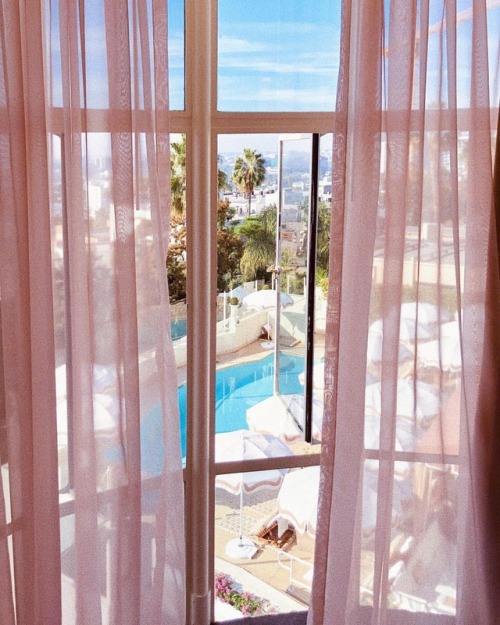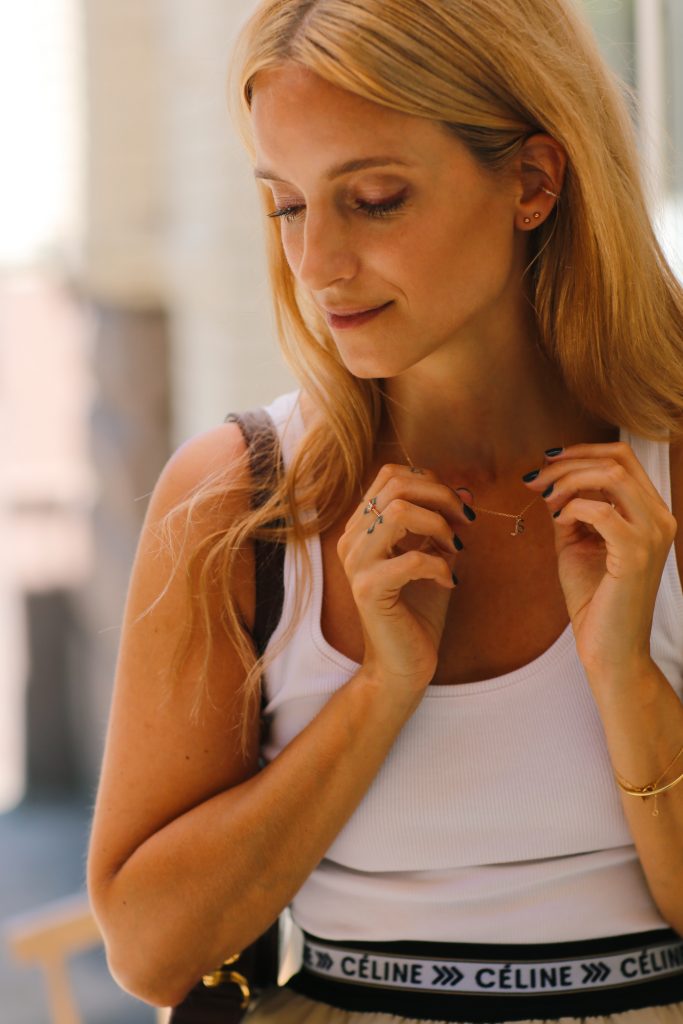

🌸🌴 hide & seek 🌸🌴 (at West Hollywood, California)
https://www.instagram.com/p/BoUJsb4FhS6/?utm_source=ig_tumblr_share&igshid=odzzyvx4b3lj


🌸🌴 hide & seek 🌸🌴 (at West Hollywood, California)
https://www.instagram.com/p/BoUJsb4FhS6/?utm_source=ig_tumblr_share&igshid=odzzyvx4b3lj




Hi Everyone!
It’s Tanesha chiming in before sharing this week’s Dear Diary entry written by an anonymous GWC reader. If you aren’t familiar with this column, check out this post.
This week’s entry discusses a reader’s experience with an illness that’s left her thinner, but not healthier, like everyone around her assumes.
x Tanesha










The brands and products changing the face of the industry...
Eco initiatives are having their moment, with forward thinking brands setting a new benchmark for the sustainable beauty movement.
Below we’ve rounded up the beauty brands and their hero products that are doing it best. Who knew saving the planet could look so good?
Who knew that you could create earth-friendly plastic from sugar cane? Aveda did- back in 2002. Since Aveda was founded in 1978 by pioneer of holistic beauty, Horst Rechelbacher, Aveda has been mindful of its environmental footprint and today the figures speak for themselves. Some 85 per cent of its skin and haircare products, such as Aveda’s Thickening Tonic, are housed in PET (polyethylene terephthalate) bottles and jars made from 100 per cent post consumer recycled materials (think milk bottles). #Avedacleanwater is another of its major philanthropic missions and since 2007, Aveda has raised more than $44 million (about £34m) to support the cause. For instance, every April, during Earth Month, it donates the full RRP less VAT from its Light The Way Candle to the Global Greengrants Fund. Together they have helped 1,137,428 people in 88 countries access clean water. Its use of plant-based and organic ingredients, such as turmeric and amla, has led to 104,900 acres of land being devoted to sustainable agriculture. Throw in the fact that it was the first beauty company to manufacture products with 100% wind power and there’s no question that Aveda is leading the charge when it comes to giving back.

This British brand nixes every rumour you’ve ever heard about botanical skincare not being as effective as its chemical counterparts, while keeping its carbon footprint low too. ‘Balance Me manufactures all its products in the UK and our warehouse is still in East London to ensure our carbon footprint is lower than any brand that manufactures abroad and flies or ships in its merchandise,’ says co-founder Rebecca Hopkins. What’s more Balance Me consciously uses only natural actives and, for complete transparency, lists the natural percentage of each product on the front of its packaging. ‘We’ve created luxury formulations at supermarket prices as we absolutely believe that ethical beauty should be inclusive. To that end, we source natural botanicals from all over the world, but we’re also lucky that we can sustainably harvest many ingredients such as borage oil, cucumber extract and carrot tissue oil right here in the UK.’

Botanical beauty is a growing market, thanks to switched-on consumers demanding greater transparency on the origin of ingredients. But while the industry plays catch-up, brands that have long championed this philosophy are taking centre stage. The Organic Pharmacy first launched organic makeup in 2006. Fast forward 12 years and botanical tech has moved on so much that founder Margo Marrone has re-formulated her entire colour range. ‘Everyone is talking about clean makeup with skincare benefits but that has been at the core of our DNA since we launched,’ she says. ‘We had to work hard to make sure the colour range was performing but now I’ve upped the ante with natural ingredients.’ The Organic Pharmacy Hydrating Foundation, £45 for instance, contains stem cells, hyaluronic acid and vitamins that work with your skin to strengthen it, and the highly micronised pigments are colour-adapting natural pigments that blend perfectly with the skin, meaning the sheer formula will adapt to any tone for a fresh-faced glow. Plant extracts have also come on leaps and bounds. “Before, you would put plant colour into a product and it would disappear after a few hours,’ says Marrone. ‘Now we’ve sourced plants with a punchy hue that are stable even in sunlight.’ The added bonus is that the majority of the vitamins are infused in the pigment, so you reap the antioxidant benefits at the same time as a gorgeous colour payoff.

The tides are – quite literally – changing in the world of skincare packaging. And it’s about time: by 2050 it’s estimated there will be more plastic in the sea than fish. That’s why, as part of the brand’s Clean to Planet initiative, Ren Clean Skincare will be one of the first skincare brands to offer products in a 100% recycled bottle containing 20% plastic reclaimed from the eight million tonnes that enter the oceans, beaches and rivers every year (this is the highest amount that can be safely used with current recycling technology). ‘We decided to take any plastic,’ explains CEO Arnaud Meysselle, ‘and almost the entire bottle can be recycled a second time.’ It’s the latest step in the brand’s pledge to becoming Zero Waste by 2021 and even more fitting considering the product inside. The cult Atlantic Kelp and Magnesium Body Wash is formulated with actives such as kelp and plankton sustainably sourced from the eastern coast of Canada. ‘The strong tides bring in a lot of nutrients that are lost in other coastal regions,’ says Meysselle. ‘All harvesters are trained in marine life and use specialised tools that won’t disrupt the ecosystem.’

Growing up, who didn’t wear their The Body Shop Born Lippy strawberry lip balm as a badge of honour? It said ‘I’m against animal testing’ (right now the brand is calling on the UN to adopt a worldwide ban on animal testing for cosmetics and ingredients) and “I support fair trade and going greener’. All this in the late 70s and 80s when lifting the lid on eco issues and unfair farming practices wasn’t a dinner party conversation. That commitment to being a force for good hasn’t changed. In fact, by 2020, as part of its Enrich Not Exploit Commitment, The Body Shop aims to protect a whopping 10,000 hectacres of forest; regenerate 75 million square metres of habitat to help communities live more sustainably and double its community trade ingredients from 19 to 40, helping those in rural areas around the world. The Body Shop was the first to use hemp in beauty products 20 years ago, helping farmers make a living from more diverse crops. Today, the Hemp Hand Protector is one of the bestselling products- not surprising when you consider hemp’s highly moisturising properties. And because it’s a naturally resilient plant, there’s no need for pesticides, which is kinder to the environment. Win-win- all of which proves it’s worth staying loyal to our first beauty love.

Thankfully, our options for cruelty-free beauty products have grown considerably over the past decade. However, finding products that are also vegan? Now that’s a grey area. To be clear: it’s illegal to test cosmetics on animals in the UK but just because a company is cruelty-free doesn’t mean it’s also vegan. That’s why the Maui Moisture range of shampoos, conditioners and hair treatments, deserves bragging rights. Since its launch in 2016, Maui Moisture has never tested its products on animals and, better still, it doesn’t use any animal ingredients or by-products. ‘Many hair products contain honey, beeswax and the animal-derived protein keratin,’ explains Jaime Kontz, Associate Director of Research & Development. ‘Our mission was to find effective plant-based ingredients so that we didn’t have to use anything derived from an animal. Our free-from formulas start with aloe vera juice and coconut water, instead of chemically treated de-ionised water, and are packed with 100% vegan botanicals that have the added benefit of being naturally rich in vitamins, minerals and antioxidants to help repair and hydrate strands and scalp.’
Seaweed gives kale a run for its money in the nutrient stakes as it’s packed full of magnesium, calcium, copper, iodine, iron, potassium, phosphorus and zinc as well as vitamins, A, B, C, D and E- all proven to boost immunity, improve heart health and regulate hormones. it does wonders for the skin, too- detoxifying, hydrating and locking in nutrients. That’s why industry favourite Voya, an Irish brand that uses hand-harvested seaweed, is doing its best to protect the algae. Environmentally, seaweed operations must show that they maintain sustainable wild populations and actively minimise their impact on the surrounding natural environment. Voya’s seaweed is grown organically and harvested by a specialist local team on the reefs of Ireland’s north-west shoreline ‘It is essential that our seaweed is harvested in a way that allows both communities and the environment to thrive,’ says Emma Roberts, head of business development. ‘We work closely with environmental organisation World Land Trust and offset carbon-dioxide emissions associated with Voya’s general operations’ And to give something back to the oceans Voya also adopts seals. You can’t get any more caring than that!

Microbeads, now thankfully banned, used to be the nemesis of our sea life. Today, it seems they have been replaced by minuscule particles of glittery plastic, which find their way into oceans and our watery supply. Luckily, we’re not the only ones who think the only shimmery things in the sea should be a shell’s natural mother-of-pearl finish. Lush has replaced plastic glitter with eco-safe synthetic mica. ‘Even though the mica is synthesised in a lab, it is made of natural minerals, so you don’t end up with the problem of micro plastics,’ says creative buyer Gabbi Loedolff. ‘Another benefit is that unlike natural mica, which has jagged edges, synthetic mica is very smooth so we can use much bigger particles, create bolder colours and more reflective products’. All of which gives the environment a shinier future, too.

By now we should all be well- versed in pollution from smog and exhaust fumes. But household pollution? Not so much. And yet the combined effects of outdoor and indoor toxins cause more than 550,000 premature deaths every year in Europe, according to the World Heath Organisation. ‘Simply closing our front doors to a busy road doesn’t prevent ultra-fine and potentially harmful particles getting trapped inside our homes,’ says Paul Dawson, Vice President of health and beauty at Dyson. ‘There are also fumes released from new furniture, cleaning solvents and gasses from cooking, which is all the more worrying considering we spend 90 per cent of our time indoors and a resting adult inhales around 7-8 litres of air every minute’. To offset the damage, Dyson have created a filter system to remove 99.95 per cent of indoor pollution particles and allergens as small as o.1 microns from the air, as well as feeding real-time air quality back to you (try the Pure Cool Purifying Fan, from £399.99). Pretty clever, no?
The post The ethical beauty trailblazers you need to know about now appeared first on Marie Claire.


Jewelry is a personal thing; you either love a certain piece, or you straight up hate it. I know this sounds a little harsh, but it’s truly how it goes, or at least for me. I’m so particular in what I like that I end up wearing one set of rings – all the time – and one pair of diamond earrings, one of two watches, and a bangle or two. That’s it.
Now don’t get me wrong, it’s not that I’m not open to new pieces, or not willing to find them. I am! But again, it’s just so damn hard. So imagine when this super lovely and talented girl boss from The Netherlands approaches you with her flourishing fine jewelry brand, and asks to create a personal “jewelry” look together… you jump, high!
So last week when I was in Italy, I received her email and went straight to her website auratenewyork.com not knowing exactly what to expect, but I was taken the first second I laid my eyes on it. It was EXACTLY what I love. No doubt one of the most delicate and sophisticated fine jewelry pieces I’ve come across lately. Well anyway, I was about to create my personal “jewelry look” meaning the four or five everyday key pieces that every woman should own as a basis for a fine jewelry look…
Now I like to keep it simple – as you know – so the pieces I selected are simple to the core, but the detail of the rose gold and diamonds make them everything but average. There’s nothing vanilla about this simplicity I was aiming for, but – and you girls who know fine jewelry know – it’s all in the little details.
Earrings I wear most of the time in only one ear, but for the occasion I’m showing you how to wear different pieces in both ears, yet, if you were to decide to go for one ear, they do stand alone like this perfectly, too. Two rose gold ball studs and one diamond cuff. Absolute 100% my ultimate “ear-look”. Then the other ear, a delicate bar with diamonds and again rose gold. For the ring – and for the occasion I took the rest of my rings off to give it some more light – I went for a mini diamond in yellow gold. You could stack it with other rings, which I will most likely do, or stand alone like this. I love how it shows my tattoos better when wearing it solo!
Necklace… well, what can I say… J is for James, S is for Stella. I haven’t taken it off since we shot this collaboration, and I’m not planning to either…
Photos by Moeez, in collaboration with Aurate New York.
The post J IS FOR JAMES & S IS FOR STELLA appeared first on THEFASHIONGUITAR.